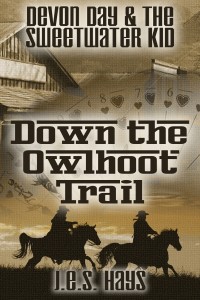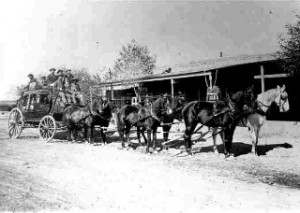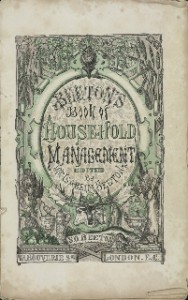It’s not just the words you use that makes a great blog post.
Here are some questions to help you write the perfect post:
- How easy is it to read? Are you using “ten-dollar words” when most people read on a fifth-grade level? Is it one solid block of text that seems to go on forever? Make your post easy for your reader to get through.
- How visually engaging is your post? Do you have pertinent images and/or videos to explain your topic? Is your post mostly text, or is it broken up with “white space” that’s easier on the eyes? Make it “scannable,” with bullet points, lists, and short sentences and paragraphs.
- How well does it answer your reader’s questions? If your title is “How to Save $200 in One Month” have you successfully told the reader how to do that by the end of the post? If you don’t satisfy your readers, they’re not going to come back.
- How will it keep drawing traffic to your blog? Is your topic pertinent to most everyone? Will it still be pertinent next week or next year? Is it something everyone wants to know about?
What do you think makes a perfect blog post?
Here’s some more information on writing a good blog post.
To start with, there are basically five different types of post you can choose from:
- The List Post. This is exactly what it sounds like: making a list of things. This post is a list post.
- The How-To Post. Again, just what it sounds like: directions for performing a specific task. How to Write an Effective Blog Post, How to Write Convincing Dialogue, or How to Show, Not Tell.
- The Curated Collection Post. Gather information pertinent to your blog topic and share it with your readers. Top 10 Websites for Writers, 25 Gifts for Your Writer. Remember to give credit where due when sharing other blogs or images.
- The SlideShare Presentation Post. Images pertinent to your topic. Best Journals on the Market, Gifts for Writers.
- The Newsjacking Post. This means using a popular news story to increase your blog’s popularity. It’s harder to do if you’re writing about writing, as I do, but it’s doable with some creativity.
In the next post, we’ll talk more about the specifics of writing a good blog post. What’s your favorite type of post to write?
“Blog” is actually short for “Web Log.” In the early 1990s blogs began as journals, meant more as an online diary than anything else.
I’m going to do a couple of posts on … blog posting. Here are the basics of creating a good blog.
- Know your audience. Before you even put finger to keyboard, think about who you’re trying to reach. What do they want to know about? What can you write that will resonate with them?
- Make your domain. If you intend to be a serious writer, you’ll probably want to invest a few dollars and get your own domain, either your author byline (www.jeshays.com) or something related to your books. Some inexpensive web-hosting services include GoDaddy, DreamHost, and HostGator. For a blog, I recommend a WordPress site.
- Customize your theme. Did you notice how my website reminds you of the Old West? I happen to have a good friend who’s a graphics designer, but even without help, you can pick and choose from the free templates available. Two things people are going to notice right away are your logo and your “about” page (you can also call this a Bio page), so be sure those are consistent with your brand.
- Pick a topic and title for your first post, then start writing. You might want to make an outline first so you have a good idea where to go. Aim to keep your posts down to around 800 words or so, and break up the text with images so it doesn’t overwhelm your reader. Tag your post with some specific keywords so the reader can browse for topics they’re interested in and end with a call to action letting them know what you want them to do next (subscribe to your email list, buy a book or leave a comment).
In the next post, we’ll dive further into what makes a good blog post. What sorts of posts do you like writing?
This week, I’m part of a Writing Process Blog Tour, where authors talk about their process and why they write what they write.
At the end of this post, I’ll tag three other authors who will post about their writing process on their own blogs next Monday, thus continuing the Blog Tour – follow them as they tell their tales
What am I working on?
DOWN THE OWLHOOT TRAIL is out on the market – available on Amazon and Barnes and Noble, and on the JMS Books website.
I’m now working on a novel featuring Devon Day and the Sweetwater Kid, tentatively titled OUTLAW SECURITY. The lads have succeeded in their goal of becoming the two most successful outlaws West of the Mississippi, and their alter egos of Kye Devon and Chance Knight are two of the wealthiest (and most eligible) young men in San Francisco. They have everything a couple of rogues could ever want — until Federal Agent Kirkham tracks them down! I’m hoping to complete the manuscript to my satisfaction within the year, and start shopping it around.
I’m also working on a short story for the Western Fictioneers’ Wolf Creek series. The anthology is called LUCK OF THE DRAW, and concerns a marathon poker tournament in the fictional town of Wolf Creek. The only thing Chance likes better than robbing the big bugs of the world is playing a rousing hand of poker, so he’ll be there with bells on.
How does my work differ from others in its genre? I think I have more humor than you’ll see in most Westerns. Chance and Kye are wise-acres, and they handle stress by ragging on each other and making smart-ass remarks. It’s also a bit unusual to have your heroes be unrepentant outlaws. These fellows are going to “retire” one day — they know they’re bucking the odds, and aren’t going to keep going more than a few more years — but that’s going to be because of their age and the chances of getting caught. They suffer not a qualm about the morality of what they do.
Why do I write what I do? I’ve always loved Westerns, particularly those with memorable characters, and most particularly where one of those characters is a trickster. The trickster character has fascinated me since childhood, when I first realized that you could use your wits instead of your brawn to solve a problem. All of my stories have a trickster character, though I hope they don’t get into quite as much trouble as some of the traditional tricksters.
I enjoy writing about the Old West because it was a “simpler” time when people were judged on their actions instead of how much money they had or how photogenic they might be. The idea that you had to be polite or risk getting shot is also appealing! The characters who made it out West were tough people, fighting nature as much as each other, and that makes for good story characters. I love the American Southwest, too, and like putting the haunting vistas into my stories.
How does my writing process work? When I’m “in the groove,” I usually get up early and get in half an hour of writing before I start work. On my days off, I try for at least 2,000 words, though if I’m on a roll, I can do more than that. If I’m editing, I try to finish at least one chapter to my satisfaction.
I tend to start at the beginning and write straight through to the end, though I have on occasion jumped right into a scene that fired my imagination. I do a lot of research before I start writing, because I like to get the history right, but I can also find myself surfing the internet during a chapter if I discover something I forgot to look up beforehand. I got halfway through a scene at the lads’ house when I realized I had no real idea what the inside of a typical house in that era would look like. I found an entire book on the subject and downloaded it.
I write using two basic programs: Microsoft Word and Scrivener. I use Word for short fiction and blog articles, just because it’s easy to pull up a new page and save it. Scrivener is great for the novel, because you have so much you can do on it. Character charts, side notes, research articles — they even have “index cards” you can slide around to rearrange your scenes.
A Thank-You tag:
Thanks to the talented Meg Mims for tapping me to join The Writing Process Blog Tour! Meg is the author of the Double Series: Double Crossing and Double or Nothing, (both of which you should read!) and is currently working on a new cozy mystery series with Sharon Pisacreta, writing as D.E. Ireland. The first book, Wouldn’t It Be Deadly, is coming out in September, 2014, and is already available for pre-order on Amazon and Barnes and Noble. Meg also writes for the Western Fictioneers’ Wolf Creek series.
Tag – You’re It!
Thanks for stopping by today to read about my writing process. Now it’s my turn to tag three other authors to talk about their process and why they write what they do. Follow these authors’ posts in the next few weeks. Learn about them and discover a whole host of new books to read
J.M. Kelley – author of Drew in Blue and Daddy’s Girl





